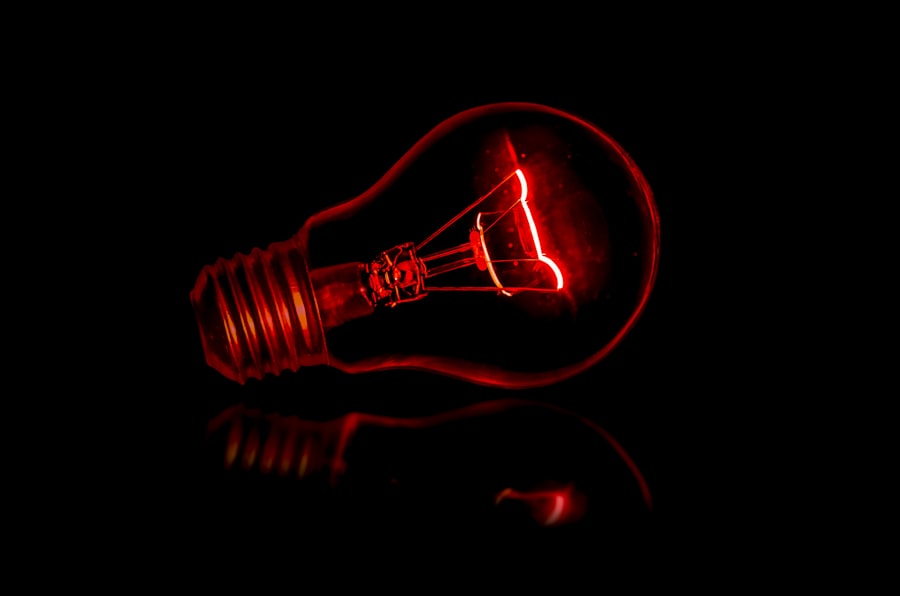Red light has emerged as a significant area of study in the poultry industry due to its potential effects on chicken behavior, sleep patterns, and overall well-being. Research has focused on the use of red light in chicken coops and barns, as it is believed to have a calming and soothing effect on chickens. The theory behind this is that red light mimics the natural light spectrum at sunset, potentially helping to regulate the circadian rhythms of chickens and promote improved sleep patterns.
This article will examine the impact of red light on chicken sleep patterns, behavior, and well-being, drawing on scientific studies conducted to understand its effects. It will also explore practical applications of red light in chicken coops and barns, as well as considerations for using red light to manage chicken sleep. The goal is to provide readers with a comprehensive understanding of how red light can be utilized to promote chicken welfare in poultry farming environments.
Table of Contents
- 1 The Impact of Red Light on Chicken Sleep Patterns
- 2 The Role of Red Light in Chicken Behavior and Well-being
- 3 Scientific Studies on the Effects of Red Light on Chickens
- 4 Practical Applications of Red Light in Chicken Coops and Barns
- 5 Considerations for Using Red Light to Manage Chicken Sleep
- 6 Red Light and Its Role in Promoting Chicken Welfare
- 7 FAQs
Key Takeaways
- Red light can have significant effects on chickens, including their sleep patterns, behavior, and overall well-being.
- Scientific studies have shown that red light can impact chicken sleep patterns, with potential benefits for their welfare.
- Red light plays a role in regulating chicken behavior and can contribute to their overall well-being in a coop or barn setting.
- Practical applications of red light in chicken coops and barns can include using it to manage chicken sleep and promote their welfare.
- When using red light to manage chicken sleep, it’s important to consider factors such as intensity, duration, and timing to ensure the best results for chicken welfare.
The Impact of Red Light on Chicken Sleep Patterns
Regulating Circadian Rhythms
Exposure to red light at night has been shown to help regulate the circadian rhythms of chickens, leading to improved sleep patterns. As naturally diurnal animals, chickens are most active during the day and sleep at night. However, artificial lighting in chicken coops and barns can disrupt their natural sleep patterns, leading to stress and reduced welfare.
Promoting Natural Sleep Patterns
Red light is believed to have a calming effect on chickens, helping them to wind down and prepare for sleep. By using red light in the evening hours, farmers can help promote more natural sleep patterns in their flocks, leading to healthier and happier chickens.
Individual Needs and Considerations
On the other hand, some studies have suggested that exposure to red light at night may not be beneficial for chicken sleep patterns. It is essential to consider the intensity and duration of red light exposure, as well as the individual needs of the chicken flock. While some chickens may benefit from the use of red light to promote better sleep, others may be more sensitive to light and require complete darkness to rest properly.
The Role of Red Light in Chicken Behavior and Well-being

In addition to its impact on sleep patterns, red light also plays a significant role in chicken behavior and overall well-being. Research has shown that exposure to red light can have a calming and soothing effect on chickens, reducing stress and promoting a more relaxed environment in the coop or barn. This can be particularly beneficial in high-stress situations, such as during transportation or when introducing new chickens to an existing flock.
By using red light in these situations, farmers can help reduce aggression and promote more harmonious interactions among their chickens. Furthermore, red light has been found to have a positive impact on egg production and quality in laying hens. Studies have shown that exposure to red light can stimulate the reproductive systems of hens, leading to increased egg production and improved egg quality.
This has important implications for the poultry industry, as it can help farmers optimize their production processes and improve the overall welfare of their laying hens. By understanding the role of red light in chicken behavior and well-being, farmers can make informed decisions about its use in their operations to promote healthier and happier flocks.
Scientific Studies on the Effects of Red Light on Chickens
Scientific studies on the effects of red light on chickens have provided valuable insights into its potential benefits and drawbacks. Research has shown that exposure to red light can help regulate the circadian rhythms of chickens, leading to improved sleep patterns and overall well-being. Studies have also demonstrated that red light can have a calming effect on chickens, reducing stress and promoting more harmonious interactions within flocks.
Furthermore, research has indicated that red light can stimulate the reproductive systems of laying hens, leading to increased egg production and improved egg quality. On the other hand, some studies have suggested that exposure to red light at night may not be beneficial for chicken sleep patterns, highlighting the need for careful monitoring and adjustment of lighting conditions in chicken coops and barns. Additionally, more research is needed to fully understand the long-term effects of red light on chicken behavior and well-being, as well as its potential impact on other aspects of poultry production.
By continuing to conduct scientific studies on the effects of red light on chickens, researchers can further our understanding of its potential benefits and limitations, ultimately leading to more informed practices in the poultry industry.
Practical Applications of Red Light in Chicken Coops and Barns
The practical applications of red light in chicken coops and barns are diverse and can have significant impacts on the welfare and productivity of poultry flocks. Farmers can use red light to regulate the lighting conditions in their facilities, promoting more natural sleep patterns and reducing stress among their chickens. By using red light in the evening hours, farmers can help create a calming environment that prepares their flocks for restful sleep.
Additionally, red light can be used during transportation or when introducing new chickens to an existing flock to reduce aggression and promote more harmonious interactions. Furthermore, red light can be used strategically to stimulate the reproductive systems of laying hens, leading to increased egg production and improved egg quality. By understanding the practical applications of red light in chicken coops and barns, farmers can make informed decisions about its use in their operations to promote healthier and more productive flocks.
It is important for farmers to carefully monitor the effects of red light on their flocks and make adjustments as needed to ensure optimal lighting conditions for their chickens.
Considerations for Using Red Light to Manage Chicken Sleep

Monitoring the Effects of Red Light
When using red light to manage chicken sleep, it is essential to carefully monitor the effects of red light on their flocks and make adjustments as needed to ensure optimal sleep patterns for their chickens. This may involve experimenting with different intensities and durations of red light exposure, as well as considering the individual needs of the chicken flock.
Individual Needs and Potential Drawbacks
Some chickens may benefit from the use of red light to promote better sleep, while others may be more sensitive to light and require complete darkness to rest properly. Additionally, it is important for farmers to consider the potential drawbacks of using red light at night, as some studies have suggested that it may not be beneficial for chicken sleep patterns.
Impact on Poultry Production
Farmers should also be mindful of the potential impact of red light on other aspects of poultry production, such as egg production and quality. By carefully considering these factors, farmers can make informed decisions about the use of red light in their operations to promote healthier and happier flocks.
Red Light and Its Role in Promoting Chicken Welfare
In conclusion, red light plays a significant role in promoting the welfare of chickens by regulating sleep patterns, reducing stress, and stimulating reproductive systems in laying hens. Scientific studies have provided valuable insights into the potential benefits and limitations of using red light in chicken coops and barns, highlighting its diverse practical applications in the poultry industry. However, it is important for farmers to carefully monitor the effects of red light on their flocks and make adjustments as needed to ensure optimal lighting conditions for their chickens.
By understanding the role of red light in promoting chicken welfare, farmers can make informed decisions about its use in their operations to promote healthier and more productive flocks.
If you’re interested in learning more about the housing needs of poultry, you may want to check out this article on whether turkeys need a coop. Understanding the specific requirements for different types of poultry can help ensure that they are comfortable and well-cared for in their living environment.
FAQs
What is the purpose of using red light in a chicken coop?
Red light is often used in chicken coops to provide a gentle source of light during the night, which can help to reduce stress and encourage natural behaviors such as roosting and laying eggs.
Does red light keep chickens awake at night?
No, red light is less likely to disrupt the natural sleep patterns of chickens compared to white or blue light. It has been found to have a calming effect on chickens and can help to maintain their circadian rhythms.
How does red light affect chicken behavior?
Red light can help to reduce aggressive behaviors in chickens and promote a sense of calm in the coop. It can also encourage chickens to roost and rest during the night, leading to better overall health and egg production.
Are there any negative effects of using red light in a chicken coop?
While red light is generally considered beneficial for chickens, it’s important to ensure that the intensity and duration of the light are appropriate. Too much light, even if it’s red, can still disrupt the natural sleep patterns of chickens and lead to stress or health issues.
Meet Walter, the feathered-friend fanatic of Florida! Nestled in the sunshine state, Walter struts through life with his feathered companions, clucking his way to happiness. With a coop that’s fancier than a five-star hotel, he’s the Don Juan of the chicken world. When he’s not teaching his hens to do the cha-cha, you’ll find him in a heated debate with his prized rooster, Sir Clucks-a-Lot. Walter’s poultry passion is no yolk; he’s the sunny-side-up guy you never knew you needed in your flock of friends!







